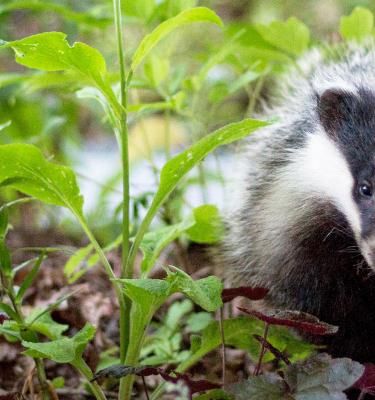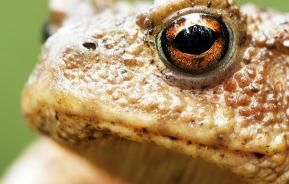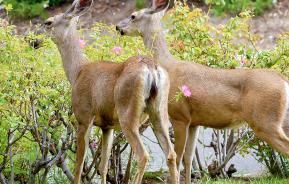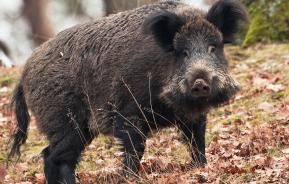Luckily, badgers are rare visitors to urban gardens – but they can be a problem in larger, rural gardens. These large mammals can cause damage to gardens by trampling plants and digging up large areas in their search for food. Badgers are protected under the Protection of Badgers Act 1992.
Description
Badgers are large, heavy mammals that normally only come out at night. As a result, we usually only see the results of their visits. They have a very varied diet and will hungrily devour just about whatever is available – fruit, vegetables, bulbs, earthworms, grubs, slugs and snails. They are particularly fond of sweetcorn. When dry, cold or frosty conditions make their natural food hard to come by, they damage flower beds and lawns, in a more desperate search for food.
Symptoms
Being large animals, badgers will damage low-growing plants by trampling them. They dig around in the soil looking for insects, often digging up plants in the process.
They will dig holes in the lawn, damaging large areas, looking for grubs, such as leatherjackets and chafer grubs and worms.
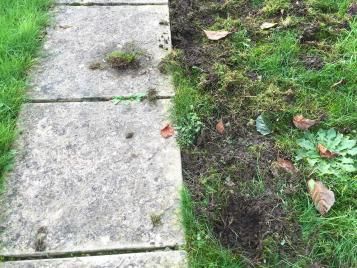
Treatment and control
Badgers can usually be discouraged or prevented from entering gardens with solid, effective fencing and locked gates. A badger-proof wire mesh, buried to a depth of 1m (3ft) may prevent them digging under fences. The bottom 30cm (12in) should be bent outwards to stop the badgers burrowing underneath.
Many badger groups suggest using a battery-operated electric fence as the best method of preventing them getting in.
Although not always 100% effective, ultrasonic devices may deter them. A radio left on all night, at levels that don’t offend neighbours, may also be successful.
Chemical animal repellents are unlikely to be effective. Although marking boundaries with male urine does seem to work!
